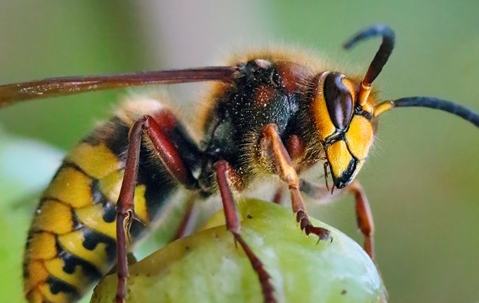While wasps and hornets share many similarities due to their common classification as members of the Vespidae family, hornets are a specific subset of wasps that are typically larger, more aggressive when threatened, and build larger nests. Their appearance, size, and nesting habits can help distinguish between the two, and understanding these differences is essential for effective pest management and safety around these insects.
1. Taxonomy:
- Wasps belong to the family Vespidae, which includes a wide variety of species, including yellowjackets and paper wasps.
- Hornets are a specific subset of wasps and belong to the genus Vespa. They are usually larger than other wasp species.
2. Appearance:
- Wasps vary in size and color but are generally slender with a narrow waist. They can be black, brown, yellow, or red, and many have distinct yellow markings.
- Hornets are typically larger than other wasps, with a more robust body. They often have a reddish-brown or black coloration with yellow or white markings.
3. Size:
- Wasps are generally smaller than hornets, with most species ranging from 0.5 to 1.5 inches (1.3 to 3.8 cm) in length.
- Hornets are larger, with queens reaching up to 1.6 inches (4 cm) and workers around 1.2 inches (3 cm) in length.
4. Nesting Habit:
- Wasps build nests from chewed wood pulp and saliva, creating paper-like nests often found under eaves, in trees, or underground.
- Hornets also construct paper nests but typically in elevated locations like tree branches, shrubs, or within voids in buildings. Their nests are generally larger than those of most wasps.
5. Social Structure:
- Both wasps and hornets can be social insects, living in colonies with a division of labor that includes queens, workers, and sometimes males.
- Hornets, such as the European hornet, usually have smaller colonies compared to some wasp species like yellowjackets.
6. Aggressiveness:
- Wasps can be aggressive when defending their nests but are generally less so than hornets.
- Hornets are known for their aggressive behavior when their nests are threatened. They can sting multiple times, and their stings are more painful than those of most wasps.
7. Diet:
- Both wasps and hornets are carnivorous and feed on insects, spiders, and other small prey.
- They can also consume nectar and fruit juices, making them occasional pollinators.
8. Stinger:
- Both wasps and hornets have stingers, which they use for defense and capturing prey.
- Hornets' stingers are longer, and they can inject more venom, making their stings more painful.
9. Geographic Distribution:
- Wasps are found worldwide and come in various species adapted to different climates.
- Hornets are more common in Europe and Asia, although some species, like the European hornet, have been introduced to North America.

